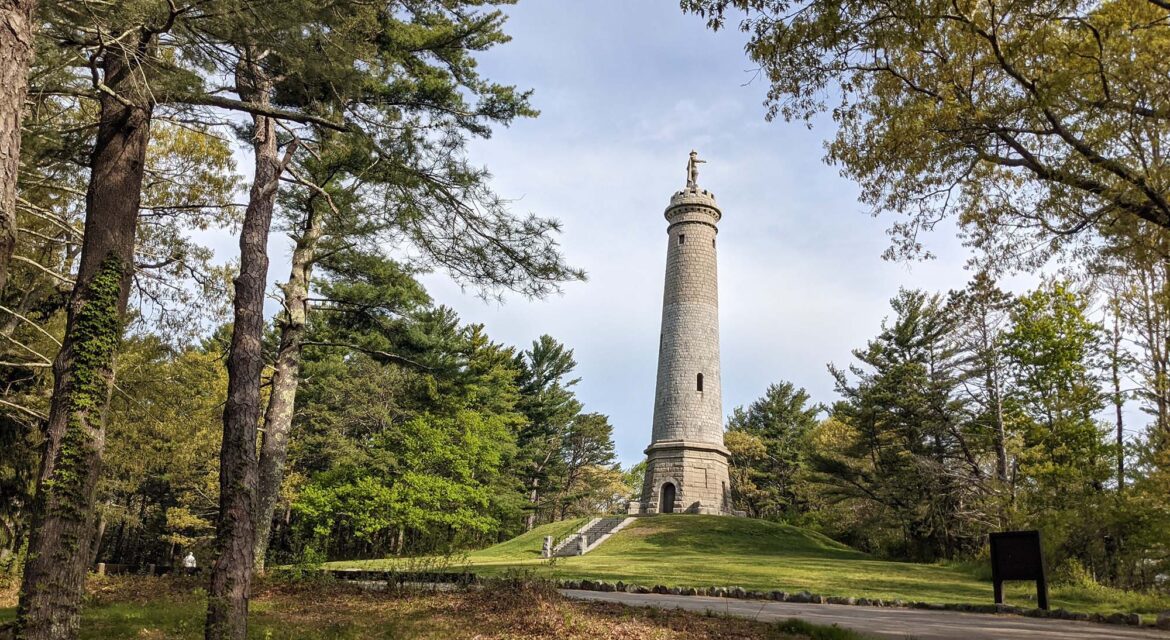 The Myles Standish Monument is connected to the legends and land that would define the United States of America. Located in in Duxbury, Massachusetts, it was built to honor one of the people who defended one of the first British establishments in North America. The monument provides an incredible view of the region and a unique connection to legends associated with the first English settlers to permanently live in the area, highlighting how monuments can shape the experiences for audiences in multiple ways.
The Myles Standish Monument is connected to the legends and land that would define the United States of America. Located in in Duxbury, Massachusetts, it was built to honor one of the people who defended one of the first British establishments in North America. The monument provides an incredible view of the region and a unique connection to legends associated with the first English settlers to permanently live in the area, highlighting how monuments can shape the experiences for audiences in multiple ways.
One of the Original Pilgrims of Plymouth Colony
 Myles Standish was an English military officer who sailed on the Mayflower and would help to establish and define Plymouth Colony when it was founded in 1620. He was elected as the first commander of the Plymouth Colony militia but would eventually step back from this role to become a farmer in Duxbury, Massachusetts, where he died in 1656.
Myles Standish was an English military officer who sailed on the Mayflower and would help to establish and define Plymouth Colony when it was founded in 1620. He was elected as the first commander of the Plymouth Colony militia but would eventually step back from this role to become a farmer in Duxbury, Massachusetts, where he died in 1656.
The role he played in defending Plymouth Colony was cultivated over the centuries, compelling several towns and military installations to be named after him. Much of this was driven by Henry Wadsworth Longfellow’s narrative poem, The Courtship of Miles Standish. The fictionalized account of his exploits directly compelled the creation of a monument in Duxbury that was designed to increase tourism.
Built at the highest point of what was once Standish’s farm, the Myles Standish Monument features a 14-foot statue of Standish which looks eastward across Massachusetts Bay while holding the colony’s charter in hand. The cornerstone was laid for it in 1872, although the monument was not completed until 1898 when the proper funds were raised. It sits atop a 116-foot granite shaft that defines Myles Standish Monument State Reservation.
The park features walking trails, picnic tables, and seasonal interpretive programs. It also has a wide-open area for events and gatherings. The top of the monument provides audiences with a panoramic view of the South Shore-church spires, several 19th-century lighthouses, Duxbury Beach, Plymouth Harbor, and the Blue Hills. The distinctiveness of the monument has also allowed it to serve as an attraction in maps and guides to the region.
The presence of the Myles Standish Monument is part of the reason the park came to be listed on the National Register of Historic Places in 2021. All of these developments highlight the massive impact that such monuments can enable for a community and even an entire country.
An Ever-Evolving Legacy
 The Myles Standish Monument is a landmark from another era of America in terms of aesthetics, history and legacy. When it was completed, the Washington Memorial was the only other landmark dedicated to an individual citizen that rivaled it.
The Myles Standish Monument is a landmark from another era of America in terms of aesthetics, history and legacy. When it was completed, the Washington Memorial was the only other landmark dedicated to an individual citizen that rivaled it.
Inherently linked to the near-mythic role that Standish played in Plymouth Colony, the truth behind this legend continues to be investigated, which makes the legacy of the man and monument ever evolving. Regardless of how things change with both, what will never change are the experiences that audiences can have above and around a landmark that cultivates a connection to the history of the region as well as to the legacy of the entire country.



